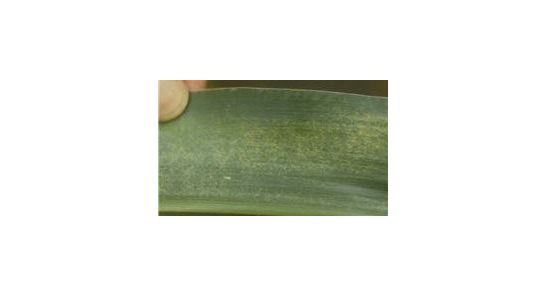Pest ID
- Both two-spotted spider mites and Banks grass mites affect the corn population. Proper mite identification is important because the two-spotted spider mite is much more difficult to control.
- Two-spotted spider mite females have a well-defined spot on each side of the body.
- Banks grass mites have blackish-green pigmentation extending the full length of the body. Banks grass mites appear earlier in the season on lower leaves, while two-spotted spider mites appear later in the season and may spread rapidly over the entire plant. (SOURCE: University of Nebraska, Management of Spider Mites in Corn, Bob Wright, Gary Hein, Jack Campbell, July 29, 1996)
Facts about Spider Mite

- Spider mites feed on the undersides of leaves, eventually killing the leaf and leaving it with a scorched or burned appearance. The opposite side of the leaf from the mite colony is usually yellow.
- A common cause of mite infestation is hot, dry weather, and the pest is often a problem in drought-stressed corn.
Life Cycle of Spider Mite
- The mites overwinter as females and may lay some eggs during prolonged warm spells.
- Generation times depend on temperature and are typically 10 to 20 days.
- Under laboratory conditions, populations can increase 70-fold in one generation.
Management of Two-Spotted Spider Mite
- Be aware that certain insecticides for European corn borer, western bean cutworm and other pests also reduce populations of beneficial insects, making fields more susceptible to spider mite infestations.
- Use of hybrids containing Bt is an effective option that has less harmful effects on the spider mite's natural enemies.
- Banks grass mites are more susceptible to the available miticides than two-spotted spider mites.
- Dimethoate is still effective against Banks grass mites, but not against two-spotted spider mites.